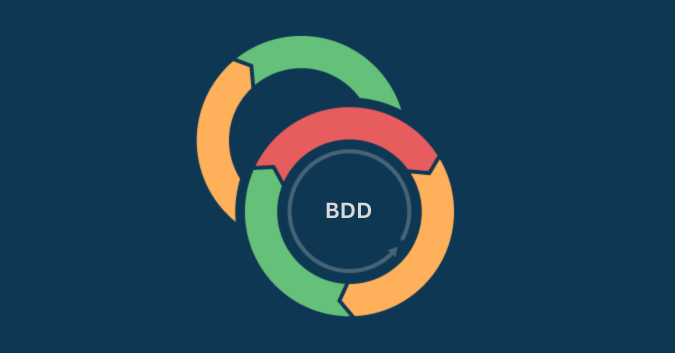“Risk comes from not knowing what you’re doing.“
Warren Buffett
The same principle applies to software testing as well. If you do not know why and what you are testing, risks await ahead. For a software product, the risk is defect slippage affecting the product quality. This eventually leads to losing business and goodwill.
When you know the impact of the failure of some features, functions, or modules of the product, this identifies the risk. So then, you prioritize their testing to mitigate or avoid the risk of their failure in production. This whole process is known as Risk-Based Testing or RBT.
In short, RBT prioritizes and optimizes testing high-risk areas in a product early to ensure that they work as expected with real users. This makes complete sense in an agile environment, where the short sprints demand selective testing to avoid releasing the software with catastrophic defects.
What is risk-based testing?
What is a risk? In software testing, risk can be defined as an unforeseen security, functionality, compliance, or performance failure (threat) in the production environment.
Using risk-based testing (RBT), teams identify and assess these risks. Then, they follow a testing process to ensure the most critical risks are tested early in the development cycle so that they are eventually avoided in production.
RBT is commonly applied in the following situations:
| Scenario | Description |
| Complex applications | Prioritize testing in complex software with multiple components by focusing on areas prone to failure due to their complexity. |
| Short testing timelines | Use RBT to optimize testing efforts for projects with tight schedules, emphasizing critical functionalities within a limited time. |
| High-risk systems | Apply RBT to high-risk systems to prevent substantial financial or data loss due to potential failures. |
| Budgeting restrictions | Utilize RBT to optimize testing processes within constrained budgets, maximizing testing efficacy with available resources. |
| Compliance and regulations | Employ RBT to ensure compliance with regulations in domains like healthcare and finance, focusing testing efforts accordingly. |
| Historical data on defects | Focus RBT on modules with a history of recurring defects, giving special attention to these areas in each testing cycle. |
Risk-based testing process
Below are the steps that mark a successful risk-based testing process:
Step 1: Risk identification
Identify the potential risks that can negatively impact the software application’s usability, functionality, performance, etc. Use historical data and information from requirement documents, defect reports, user stories, stakeholder interviews, user reviews, and so forth to compile all potential risks.
Step 2: Risk analysis
Analyze the identified risks from Step 1 to gain a deeper understanding. This involves assessing their likelihood and impact, often through discussions with stakeholders, business analysts, testers, developers, and existing users. It’s a two-step process aimed at evaluating risks comprehensively.
Risk Analysis = Likelihood X Impact
Where the “Likelihood of Risk” is the probability of risk occurrence, and the “Impact of Risk” is the severity of the consequence if it occurs.
Step 3: Risk prioritization
The next step is to prioritize the risks based on the analysis. Classify the risk’s priority as High, Medium, or Low, depending on their likelihood and impact. A high-priority risk has a high probability of occurrence and has a huge business impact. These risks require immediate attention and intensive testing efforts.
Step 4: Test planning and design
Plan and design the test strategy, schedule, and test cases based on the risk priorities. Create a detailed test plan with resources, tools, timelines, and types of tests such as performance, functional, security, etc.
Step 5: Test execution
Execute the test cases based on the test strategy, beginning with high-risk tests. Monitor the test progress, log defects, and reevaluate the risks continuously.
Step 6: Reassessment of risks
In case there are changes in project scope or external factors, reassess and reprioritize the risks simultaneously with the testing process.
Update the risk analysis to incorporate the changes as they arise. Then, use this updated information to execute the relevant test cases to reflect the high-priority risks during RBT.
Step 7: Reporting and feedback
Prepare a detailed defect report as well as reports detailing test results, risk mitigation status, and any remaining risks to be addressed. This crucial information helps stakeholders make informed decisions about the release readiness and decide if further risk evaluation is required.
Step 8: Test closure
Evaluate the overall risk status at the end of the testing cycle. A sign-off from stakeholders is the last step to accepting the final production release. The software is released for customer usage if the residual risk level is acceptable.
Example of the RBT process in real life
Let’s consider a scenario in the context of software development:
Step 1: Risk identification
The team uses historical data, requirement documents, defect reports, user stories, stakeholder interviews, and user reviews to identify potential risks:
- Usability: Browser compatibility issues during checkout.
- Functionality: Payment gateway integration errors.
- Performance: Security vulnerabilities in user data during transactions.
Step 2: Risk analysis
The team evaluates the likelihood and impact of these identified risks through discussions with stakeholders, developers, and testers.
Likelihood x Impact: Payment gateway issues have a high likelihood (due to complexity) and high impact (critical to transactions).
Step 3: Risk prioritization
Based on the analysis, risks are classified as High, Medium, or Low. Payment gateway integration emerges as a high-priority risk and is therefore prioritized for testing.
Step 4: Test planning and design
The team develops a detailed test plan emphasizing payment gateway testing with various scenarios, ensuring secure transactions and compatibility across browsers.
Step 5: Test execution
Testing begins with the high-priority payment gateway integration risks, closely monitoring issues and logging defects.
Step 6: Reassessment of risks
As testing progresses, the team reassesses risks. For instance, during ongoing testing, the team initially anticipated server overload during peak usage as a potential risk. However, as testing progresses, the servers handle the load efficiently. This prompts a reassessment, potentially lowering the risk rating for server overload.
Simultaneously, they uncover a new risk: a specific feature experiences performance degradation under heavy user loads, prompting it to be prioritized for further investigation and mitigation.
Step 7: Reporting and feedback
The team generates detailed reports on defects, risk mitigation status, and test results. Stakeholders are able to use this information to make informed decisions on release readiness.
Step 8: Test closure
At the end of the testing cycle, the team evaluates the overall risk status. With stakeholder sign-off, the software is released for customer usage, ensuring acceptable residual risk levels.
Pros of risk-based testing
Below are the advantages of RBT:
| Pros of RBT | Description | Example |
| Efficient resource usage | RBT optimizes person-hours, test tools, and effort by focusing on high-risk areas. | An e-commerce startup concentrates testing on critical modules like ‘Payment’ and ‘Add-to-Cart’, efficiently managing testing resources. |
| Better testing quality | Prioritizing critical functionalities enhances overall software quality. | A doctor’s appointment app focuses RBT efforts on testing patient data processing, ensuring secure and accurate consultations. |
| Test early, fail fast | Early detection of high-risk defects saves significant costs in later development stages. | A personal banking app catches transfer transaction vulnerabilities early, preventing potential losses and maintaining goodwill. |
| Informed business decisions | RBT offers clear insights on defects and high-risk module readiness for informed release decisions. | A gaming app tests cross-platform compatibility through RBT before release, ensuring a seamless user experience across platforms. |
| Enhanced risk-management | Structured risk identification and assessment improve risk management in the application under test (AUT). | An online railway ticket reservation website identifies and mitigates risks related to overbooking and cancellation errors through RBT. |
| Customer-centric | Aligns testing efforts with business needs and customer expectations, enhancing user experience. | A movie streaming app focuses RBT efforts on testing user subscription management, improving revenue and user satisfaction. |
| Adaptability to change | RBT quickly adapts to changing requirements in Agile environments, ensuring successful testing processes. | An e-learning platform swiftly tests and integrates new features like social media sharing of certificates through RBT, aligning with user demands. |
| Optimized test coverage | Focusing on high-risk areas achieves comprehensive test coverage efficiently with limited resources. | Enhanced risk management |
| Cost reduction | Early detection of high-impact defects reduces overall software costs and post-release issues. | Using RBT, a software company tests a CRM system, significantly lowering post-release fixes, fostering customer loyalty, and reducing post-release patch costs. |
| Adherence to compliance | Helps regulated industries meet compliance standards by prioritizing testing in critical compliance areas. | During a holiday sale, an e-commerce site optimizes test coverage through RBT by testing complex areas crucial for performance under heavy traffic. |
Cons of risk-based testing
Below are the disadvantages of RBT:
| Cons of RBT | Description | Example |
| Risk for missed/lacking testing coverage | RBT’s focus on high-risk modules may lead to overlooking testing in low-risk areas, impacting the overall application experience. Incorrect risk assessment in complex applications can jeopardize the entire testing process. | The absence of historical data complicates risk evaluation and RBT application for a new virtual reality gaming app. |
| Over-reliance on human judgment | RBT often relies on feedback from specific team members, potentially influenced by biases and judgments, limiting the process’s effectiveness. | A developer’s negative past experience with a third-party integration can lead to overestimating its risk without objective analysis. This biases the team towards focusing excessively on mitigating that perceived risk, potentially neglecting other critical areas during testing. |
| Needs continuous reassessment | RBT requires ongoing assessment and identification of risks, demanding continual effort and resources. | For a gaming app, rapidly evolving game rules, content, and features necessitate continuous risk assessment to stay competitive, increasing the workload for the team. |
| Not effective for new applications | RBT might not align well with certain testing types, like exploratory or usability testing, which require ad-hoc human involvement. | RBT might not be suitable for testing an ebook reader, where usability and intuitiveness are key, as it lacks the ad hoc human involvement necessary for such testing. |
| Miscalculating long-term risks | RBT may focus excessively on immediate risks, neglecting long-term scalability concerns and associated risks. | A music and video streaming app’s team might concentrate solely on ongoing licensing risks, overlooking long-term considerations like expanding music distribution channels and their associated risks. |
| Needs extensive knowledge and expertise | Implementing RBT demands in-depth domain and technical knowledge, which smaller teams might lack, posing challenges in adoption. | A startup developing a wearable fitness tracker may struggle with incorporating RBT due to a lack of experts knowledgeable in healthcare and IoT domains. |
| Not a one-size-fits-all solution | During the testing of an ebook reader, where usability and intuitiveness are key, RBT might not be suitable as it lacks the ad-hoc human involvement necessary for such testing types. | During testing of an ebook reader, where usability and intuitiveness are key, RBT might not be suitable as it lacks the ad-hoc human involvement necessary for such testing types. |
| Cannot deal with complex collaborative projects | In complex projects involving multiple teams and stakeholders, aligning on the same risks for RBT can be challenging. | In testing a large-scale ERP project, stakeholders may have varying perspectives on risks, making it difficult for RBT to achieve alignment. |
Best practices for implementing risk-based testing in agile
Working in agile environments requires a dynamic, collaborative, and flexible approach. It requires iterative, rapid, and continuous development and testing incorporated with RBT.
Weave RBT into agile fundamentals
Make risk assessment a regular practice in Agile ceremonies such as sprint planning, daily stand-ups, retrospectives, etc. This will help align the sprint goals with testing efforts.
Collaboratively identify and assess risks
Involve everyone from the cross-functional teams in risk assessment and identification. Efficiently use these different perspectives to define an expansive test strategy.
Frequently reassess the risks
After every sprint, reassess the risks and testing goals based on the changes in scope, environment, new features, user feedback, etc. This helps keep the focus on the most relevant risks in the next sprint.
Prioritize testing based on risks
When planning sprints, focus on high-risk features first. Critical issues are addressed early to keep the software delivery-ready after each sprint.
Image: TestRail enables teams to assign priorities and categorize tests based on risk levels. This allows for better planning and allocation of resources to critical areas, aligning with RBT principles.
Use risk metrics in agile dashboards
When visualizing and showing project-related metrics, use RBT metrics. They aid in keeping track of the risk closure and status. This enhances the visibility of the risks’ latest status among all stakeholders.
Automate and automate
Use automation to accelerate the overall testing process and maintain consistent test quality.
Using test automation tools that support your agile testing will speed up the RBT process, provide cost-optimized solutions, and improve quality. Use intelligent, generative AI-powered tools such as testRigor for test automation.
Integrate user stories with risks
Align risk management with business requirements by integrating the user stories and acceptance criteria with risks.
Use risks as a guiding light for your CI/CD
Continuously test an application’s high-risk areas using risks as the roadmap for your CI/CD pipeline. This helps maintain software quality and high-priority risk coverage in every sprint.
Use a test case management tool
By leveraging the functionalities of a test management tool like TestRail, teams can streamline the implementation of RBT in agile, enabling better risk identification, prioritization, and comprehensive testing of critical areas throughout the development lifecycle.
Image: TestRail’s test execution features enable teams to track and manage test runs, ensuring that high-risk tests are executed and monitored effectively.
How to measure RBT’s success in agile with metrics
Measuring the success of RBT in an agile environment involves leveraging specific metrics. Here are some metrics to consider:
| Metric | Formula |
| Number of Risks Identified | Count of identified risks with severity and current status |
| Number of Test Cases Planned vs. Executed in Sprint | Planned Test Cases / Executed Test Cases |
| Number of Test Cases Passed vs. Failed in Sprint | Passed Test Cases / Failed Test Cases |
| Test Effort Variance | (Planned Test Effort – Actual Test Effort) / Planned Test Effort * 100 |
| Test Schedule Variance | (Planned Test Schedule – Actual Test Schedule) / Planned Test Schedule * 100 |
| Sprint Burndown Chart for RBT | Plotting test task progress against time during the sprint |
| Risk Identification Percentage | Number of Identified Risks / Total Potential Risks * 100 |
| Risk Mitigation Percentage | Number of Mitigated Risks / Number of Identified Risks * 100 |
| Risk Coverage | Number of Test Cases Covering Risks / Total Identified Risks * 100 |
| Defect Detection Efficiency | Number of Defects Detected in High-risk Areas / Total Defects Detected * 100 |
| Defect Leakage Percentage | Number of Defects Found in Production/UAT / Total Defects Found * 100 |
| Test Coverage Report | Percentage of executed test cases against total planned test cases |
| Risk-Based Testing Report | Comprehensive report detailing RBT activities, coverage, and mitigation efforts |
| Cost of Quality (CoQ) | Cost of Prevention + Cost of Appraisal + Cost of Failures |
Remember, the choice of metrics should align with project goals, testing objectives, and the specific nature of the software being developed. Regularly revisiting and refining these metrics will help in continuously improving the RBT process within an agile framework.
Bottom line
Risk-based testing is imperative for fast, agile, and DevOps environments with tight schedules. Dynamic environments demand high-quality products and absolute customer satisfaction. Embrace a risk-aware culture where every team member feels responsible for identifying and mitigating risks. This encourages proactive risk management and produces a more robust product.
Discover how a test management tool like TestRail can optimize your testing strategy for unparalleled efficiency and effectiveness!



